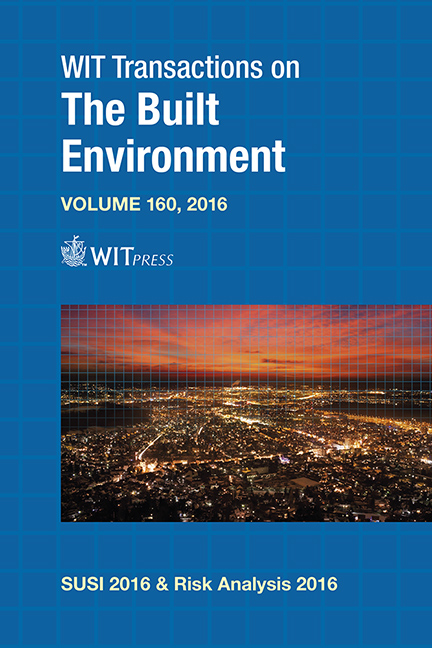Survey Of Damage To Schools And The Initial Stage Of Recovery After The 2013 Typhoon Haiyan, Leyte Province, The Philippines
Price
Free (open access)
Transaction
Volume
160
Pages
8
Page Range
63 - 70
Published
2016
Size
2,452 kb
Paper DOI
10.2495/SUSI160071
Copyright
WIT Press
Author(s)
C. J. Yi, M. Yasuda, A. Suppasri, F. Imamura
Abstract
On 8th November 2013, the super Typhoon Haiyan (Yolanda) struck the Eastern Visayas Region of the Philippines with wind speeds of 315 km/h. As a result, 14.1 million people were affected, with the estimated number of fatalities reaching 6,201 and more than 1,785 missing. The municipality of Tanauan estimated the damage cost of 34 elementary and primary schools to be 91,419,944 PHP (as of February 2014). The Face-to-Face Method survey was employed at 11 elementary schools near the coast in the cities of Tanauan and Palo to understand damage to the school buildings and their recovery process. School roofs, windows, doors, and ceilings were heavily damaged. For example, Santa Cruz primary school in Tanauan was completely destroyed by a storm surge that reached 3.8 m in height. Most schools reopened within two months for the purpose of providing care for students rather than providing education. UNICEF and international NGOs provided school supplies, foods, sanitary goods, and building tools; a Taiwanese NGO, the Tzu Chi Foundation, built temporary classrooms in schoolyards. Damaged schools were repaired by ARAW, South Korea’s biggest and longest international campaign for humanitarian assistance between January 3 and November 27, 2014. The students need to be structurally educated and the program materials and necessities prepared so that when another disaster strikes, the younger generations of today can face the disaster and overcome the challenges by strong will or with structured systems and tools. The schools in each community need to develop a suitable disaster risk reduction strategy and resilience program.
Keywords
Typhoon Haiyan (Yolanda), school damage, disaster recovery, NGO





